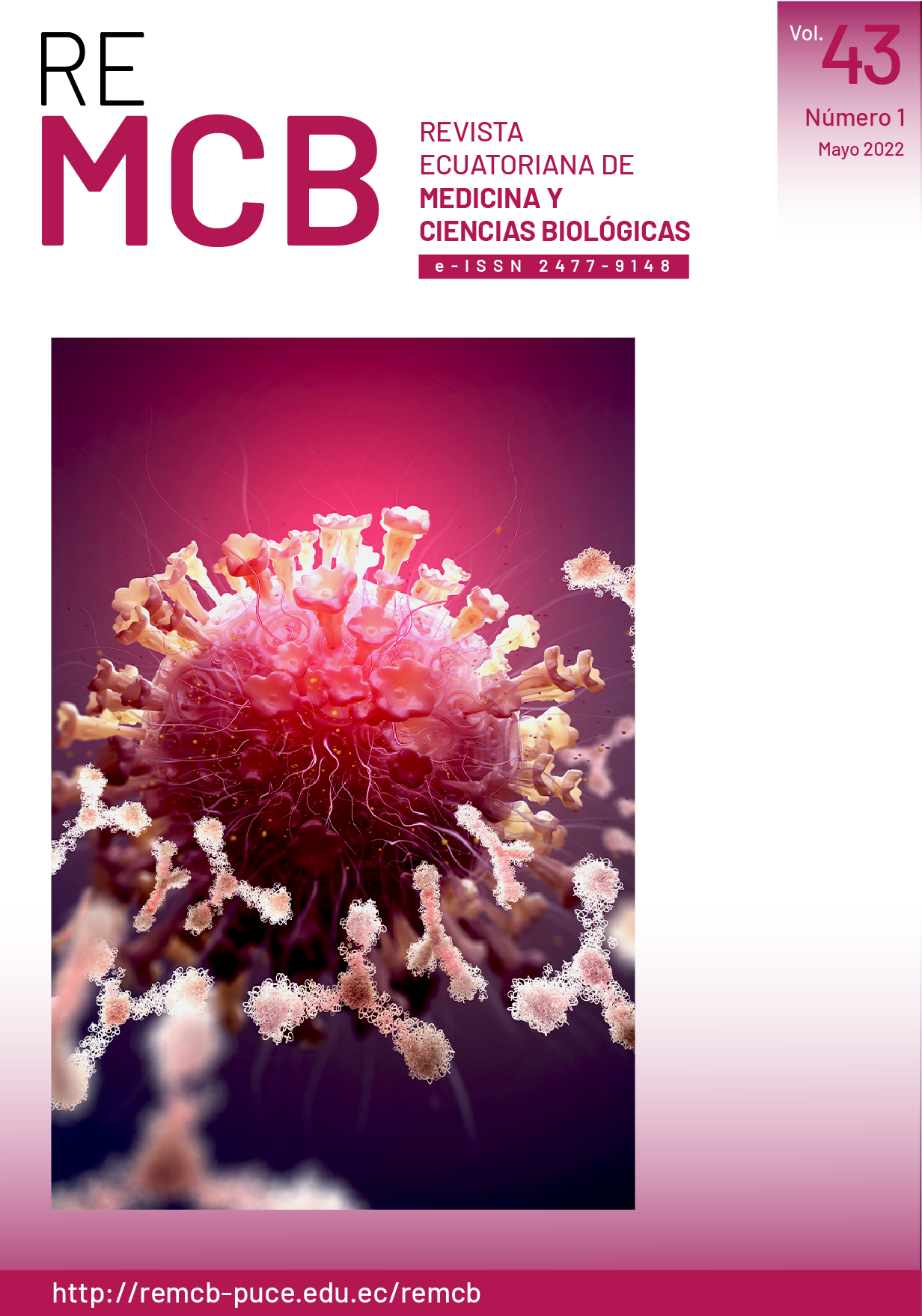Resistencia a la fractura de dientes endodonciados y obturados con dos distintos selladores endodónticos
Contenido principal del artículo
Resumen
El propósito del presente estudio fue evaluar in vitro la resistencia a la fractura de incisivos centrales superiores, obturados con gutapercha y dos diferentes selladores endodónticos. Se analizaron 60 incisivos centrales superiores extraídos con los ápices completos e intactos, así como con ausencia de tratamiento de conducto. Se procedió a decoronar a las muestras obteniendo segmentos de raíces de 15mm y se las dividió en tres grupos (n=20) según el sellador utilizado en la obturación: sellador resinoso (AH Plus), sellador biocerámico (Endosequence), dientes sanos (grupo control). Los dientes fueron obturados con la técnica de cono único. Posteriormente se incubó a las muestras por 7 días y se las sometió a fuerzas controladas de compresión en una máquina de ensayo universal a un rango de 1mm/min hasta fracturarse la raíz. La resistencia a la fractura fue medida en Newtons. Se evidenció que el mayor valor de resistencia lo presentan los dientes sanos con 865,55N; seguido por los dientes obturados con sellador biocerámico con 617,35N y el menor valor de resistencia se observó en los dientes obturados con sellador resinoso con 543,20N (p < 0.05). Se observó que no hay diferencias estadísticamente significativas (ANOVA y prueba de Tuke) y en la resistencia a la fractura entre los selladores evaluados.
Descargas
Detalles del artículo
Citas
Almeida MM, Rodrigues CT, Matos AA, Carvalho KKT, Silva EJNL, Duarte MAH, Oliveira RC, Bernardineli N. 2020. Analysis of the physicochemical properties, cytotoxicity and volumetric changes of AH Plus, MTA Fillapex and TotalFill BC Sealer. Journal of Clinical and Experimental Dentistry. 12(11). doi:10.4317/jced.57527.
Almohaimede A, Almanie D, Alaathy S, Almadi E. 2020. Fracture resistance of roots filled with bio-ceramic and epoxy resin-based sealers: In vitro study. European Endodontic Journal. 5(2). doi:10.14744/eej.2019.33042.
Chadha R, Taneja S, Kumar M, Sharma M. 2010. An in vitro comparative evaluation of fracture resistance of endodontically treated teeth obturated with different materials. Contemporary Clinical Dentistry. 1(2). doi:10.4103/0976-237x.68590.
Chybowski EA, Glickman GN, Patel Y, Fleury A, Solomon E, He J. 2018. Clinical Outcome of Non- Surgical Root Canal Treatment Using a Single-cone Technique with Endosequence Bioceramic Sealer: A Retrospective Analysis. Journal of Endodontics. 44(6). doi:10.1016/j.joen.2018.02.019.
Dibaji F, Afkhami F, Bidkhori B, Kharazifard MJ. 2017. Fracture resistance of roots after application of different sealers. Iranian Endodontic Journal. 12(1). doi:10.22037/iej.2017.10.
Han L, Okiji T. 2011. Uptake of calcium and silicon released from calcium silicate-based endodontic materials into root canal dentine. International Endodontic Journal. 44(12). doi:10.1111/j.1365-2591.2011.01924.x.
Hess D, Solomon E, Spears R, He J. 2011. Retreatability of a bioceramic root canal sealing material. Journal of Endodontics. 37(11). doi:10.1016/j.joen.2011.08.016.
Johnson ME, Stewart GP, Nielsen CJ, Hatton JF. 2000. Evaluation of root reinforcement of endodontically treated teeth. Oral Surgery, Oral Medicine, Oral Pathology, Oral Radiology, and Endodontics. 90(3). doi:10.1067/moe.2000.108951.
Mohammed YT, Al-Zaka IM. 2020. Fracture resistance of endodontically treated teeth obturated with different root canal sealers (A comparative study). Journal of Contemporary Dental Practice. 21(5). doi:10.5005/jp-journals-10024-2841.
Nunes VH, Silva RG, Alfredo E, Sousa-Neto MD, Silva-Sousa YTC. 2008. Adhesion of epiphany and AH plus sealers to human root dentin treated with different solutions. Brazilian Dental Journal. 19(1). doi:10.1590/S0103-64402008000100008.
Patil P, Banga KS, Pawar AM, Pimple S, Ganeshan R. 2017. Influence of root canal obturation using gutta-percha with three different sealers on root reinforcement of endodontically treated teeth. An in vitro comparative study of mandibular incisors. Journal of Conservative Dentistry. 20(4). doi:10.4103/JCD.JCD_233_16.
Rodríguez-Lozano FJ, López-García S, García-Bernal D, Tomás-Catalá CJ, Santos JM, Llena C, Lozano A, Murcia L, Forner L. 2020. Chemical composition and bioactivity potential of the new Endosequence BC Sealer formulation HiFlow. International Endodontic Journal. 53(9):1216– 1228. doi:10.1111/iej.13327.
Sağsen B, Üstün Y, Pala K, Demirbuğa S. 2012. Resistance to fracture of roots filled with different sealers. Dental Materials Journal. 31(4). doi:10.4012/dmj.2011-266.
Schwartz RS, Robbins JW. 2004. Post placement and restoration of endodontically treated teeth: A literature review. Journal of Endodontics. 30(5). doi:10.1097/00004770-200405000-00001.
Sedgley CM, Messer HH. 1992. Are endodontically treated teeth more brittle? Journal of Endodontics. 18(7). doi:10.1016/S0099-2399(06)80483-8.
Tang W, Wu Y, Smales RJ. 2010. Identifying and Reducing Risks for Potential Fractures in Endodontically Treated Teeth. Journal of Endodontics. 36(4). doi:10.1016/j.joen.2009.12.002.
Topçuoğlu HS, Tuncay Ö, Karataş E, Arslan H, Yeter K. 2013. In vitro fracture resistance of roots obturated with epoxy resin-based, mineral trioxide aggregate-based, and bioceramic root canal sealers. Journal of Endodontics. 39(12). doi:10.1016/j.joen.2013.07.034.
Torabinejad M, Parirokh M, Dummer PMH. 2018. Mineral trioxide aggregate and other bioactive endodontic cements: an updated overview – part II: other clinical applications and complications. International Endodontic Journal. 51(3). doi:10.1111/iej.12843.
Uzunoglu E, Aktemur S, Uyanik MO, Durmaz V, Nagas E. 2012. Effect of ethylenediaminetetraacetic acid on root fracture with respect to concentration at different time exposures. Journal of Endodontics. 38(8). doi:10.1016/j.joen.2012.04.026.
Zehnder M. 2006. Root Canal Irrigants. Journal of Endodontics. 32(5). doi:10.1016/j. joen.2005.09.014.
Zhang W, Li Z, Peng B. 2009. Assessment of a new root canal sealer’s apical sealing ability. Oral Surgery, Oral Medicine, Oral Pathology, Oral Radiology and Endodontology. 107(6). doi:10.1016/j. tripleo.2009.02.024.
Zhou HM, Shen Y, Zheng W, Li L, Zheng YF, Haapasalo M. 2013. Physical properties of 5 root canal sealers. Journal of Endodontics. 39(10). doi:10.1016/j.joen.2013.06.012.


